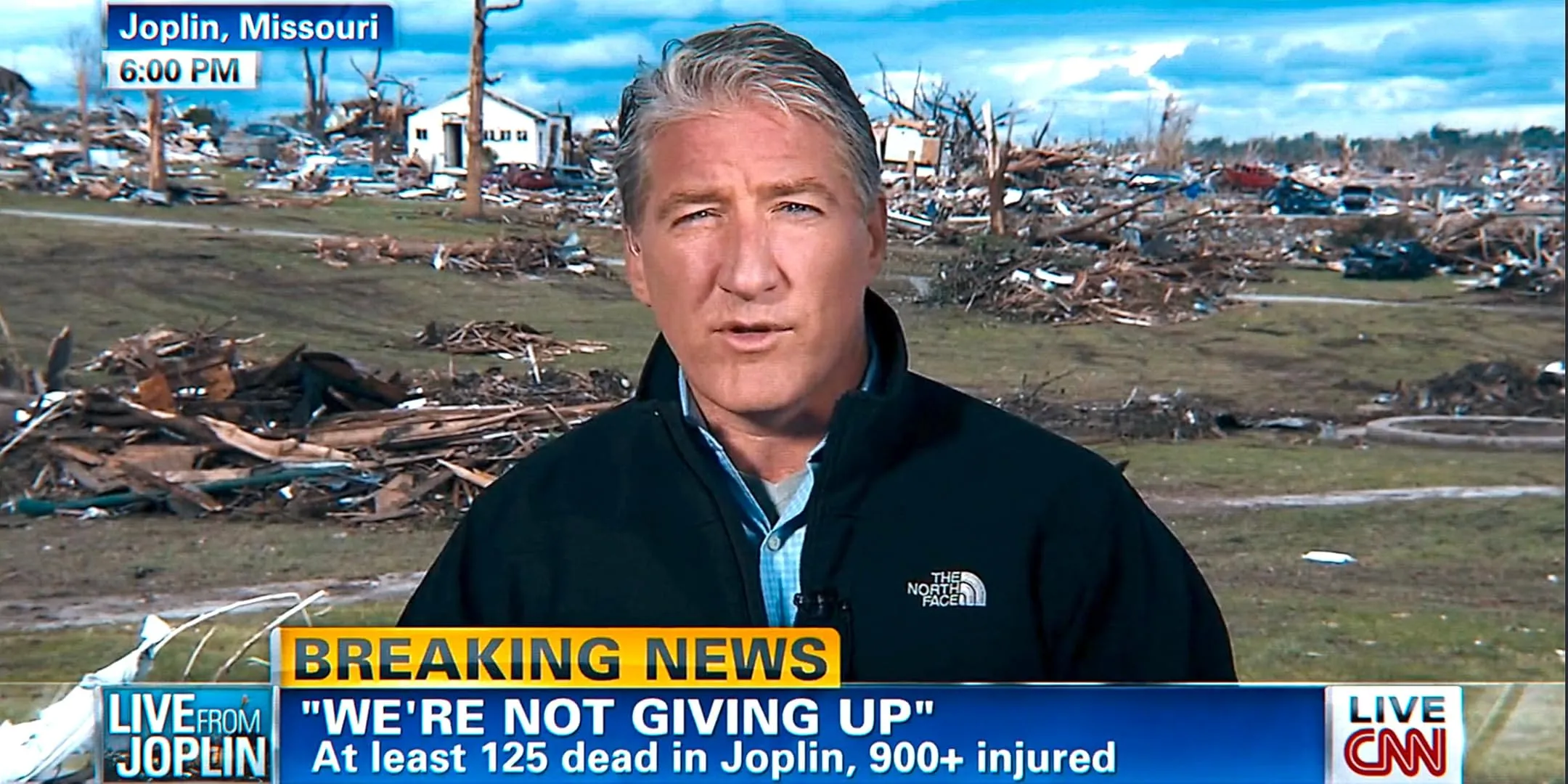Netflix’s The Twister: Caught in the Storm plunges viewers into the EF5 tornado that tore through Joplin, Missouri on May 22, 2011. Under Alexandra Lacey’s direction, the film sidesteps detached narration in favor of first-person accounts, placing us amid the roar of collapsing buildings and the snap of flying debris. Lacey stitches together handheld footage, archival news clips and audio recordings captured during a high-school graduation celebration gone awry.
Moments before cap tosses and diploma handoffs, wind slithers across the auditorium roof; then chaos erupts. Throughout, intimate testimonies—spoken over the howl of the storm—anchor the spectacle in lived experience. Instead of offering a textbook timeline of meteorological data, the film trades charts for heartbeats, trading wind-speed stats for the ragged breaths of survivors.
Listeners hear,rather than read, what it felt like when sky met earth with murderous intent. What emerges is less a dispassionate case study and more an unfiltered descent into nature’s fury, punctuated by flickers of human compassion and courage.
“Threads of Survival”: Narrative Structure and Personal Stories
Lacey’s narrative unfolds through five distinct arcs, each mapped to a different vantage point on that fateful day. Cecil, a Joplin High junior wrestling with faith and identity, ushers classmates into a storage closet as roofs tear away. Mac and Kaylee, amateur storm-chasers, trade laughter for terror as their curiosity transforms into desperation when their truck becomes prey.
Keegan, captain of the football team, departs graduation in time to sidestep the twister only to return as a makeshift EMT. Steven and Eric find themselves ripped from their vehicle, clinging to one another in a shattered convenience store. Finally, Chad, a 13-year-old visitor from California, watches a childhood fascination become a nightmare.
Lacey sequences these threads by alternating pre-storm calm—caps and gowns, truck rides, frozen-yogurt shifts—with escalating tension: ominous cloud formations, frantic weather-app alerts, hurried shelter-seeking. Foreboding lingers in slow pans across empty streets, then snaps into violent motion as the tornado touches down. Ordinary routines shatter under brutal winds, and the contrast between everyday life and elemental destruction underscores the film’s rhythm: slow dread, sudden violence, and the fragile breath held in between.
“Winds of Craft”: Visual Style and Technical Execution
Footage selection anchors this documentary’s authenticity. Grainy cell-phone videos capture debris whipping past open doors. Amateur storm-chasing clips show crews jostled by wind-gusts strong enough to topple utility poles. Archival news segments provide a broader view, while sparse slow-motion reenactments emphasize key moments—roof panels peeling off, droplets of rain hanging like bullets.
Editing choices drive momentum: interviews dissolve into storm footage just as survivors’ voices rise over wind howls, then cut back to silent close-ups of tear-streaked faces. That interplay between calm testimony and roaring gale keeps viewers off balance. Sound design heightens immersion: in one sequence, the jagged audio from inside the convenience store’s eye-wall becomes the centerpiece, raw and unfiltered.
Ambient noise—metal sheets scraping, glass shattering—melds with a restrained musical score that pulses only when tension peaks. Yet a few clips, likely sourced from stock footage, lack clear provenance; transitions feel abrupt, and the mismatch between speaker and image can jar immersion. Those moments aside, technical execution largely succeeds in marrying form and content to capture both the tornado’s brutality and the survivors’ resilience.
“Tremors of the Heart”: Emotional Resonance and Thematic Threads
At its core, the film hinges on emotional peaks that echo long after the credits roll. Viewers recoil as survivors recount “seeing the town explode,” voices trembling with disbelief. Dark humor peeks through when one witness quips, “I saw Wizard of Oz, and it didn’t look dangerous,” moments before roofs peel away.
Kaylee’s admission of survivor’s guilt—“We said our ‘I love you’s and waited to die”—cuts deep, pairing raw confession with the oppressive silence that follows. Lacey resists naming themes overtly, yet the film wrestles with human fragility against elemental power.
Ordinary celebrations give way to life-or-death choices, and strangers become protectors: Cecil shepherds classmates to safety, Keegan trades helmet for stethoscope, and Chad’s fascination spawns an inadvertent life lesson. Irony tightens its grip as the “class of the apocalypse” discovers that prophecy in one sense came true.
After the storm passes, testimony shifts: survivors describe new wounds—PTSD flashbacks, shaken faith, a hardened sense of community. Those threads converge in hushed reflections on endurance, prompting viewers to wonder how one rebuilds faith in a world that can turn on a dime. The film offers scant epilogue on reconstruction; instead, it leaves us with that lingering image of sky and earth locked in a fight where humans merely hold on.
The Twister: Caught in the Storm released on Netflix on March 19, 2025.
Full Credits
Director: Alexandra Lacey
Writer: Alexandra Lacey
Producers: Carla Grande, Leslie Lucey
Executive Producers: George Waldrum, Jonny Taylor, Mark Lewis
Cast: Mac Wright, Kaylee Parker, Chad Crilley, Doug Heady, Christy Ricci, Cecil Cornish, Andrew Keegan Tinney, Steven Weersing, Doug, Mike Bettes, Anderson Cooper, John King, Don Lemon, Will Norton, Barack Obama, Tracey Presslor, David Weersing
Director of Photography (Cinematographer): David Vollrath
Editor: Nic Zimmermann
Composer: Nick Foster
The Review
The Twister: Caught in the Storm
Netflix’s documentary immerses viewers in Joplin’s EF5 tornado through firsthand accounts and raw footage, marrying visceral spectacle with human resilience. While some stock footage sources feel unclear, the film’s pacing and sound design sustain unrelenting tension. Its focus on personal arcs—from Cecil’s faith struggle to Chad’s coming-of-age horror—imbues the disaster with emotional weight. Caught in the Storm emerges as a gripping example of community grit when nature turns ruthless.
PROS
- Immersive survivor testimonies that place viewers amid the tornado’s fury
- Tense pacing that mirrors the storm’s escalation
- Raw sound design—especially the convenience-store audio—that heightens realism
- Focus on diverse personal arcs, from faith struggles to unexpected heroism
CONS
- Occasional use of stock or reenactment footage with unclear sourcing
- Slow-motion sequences feel overused in places
- Sparse meteorological context leaves factual gaps
- Limited exploration of long-term aftermath and community rebuilding
